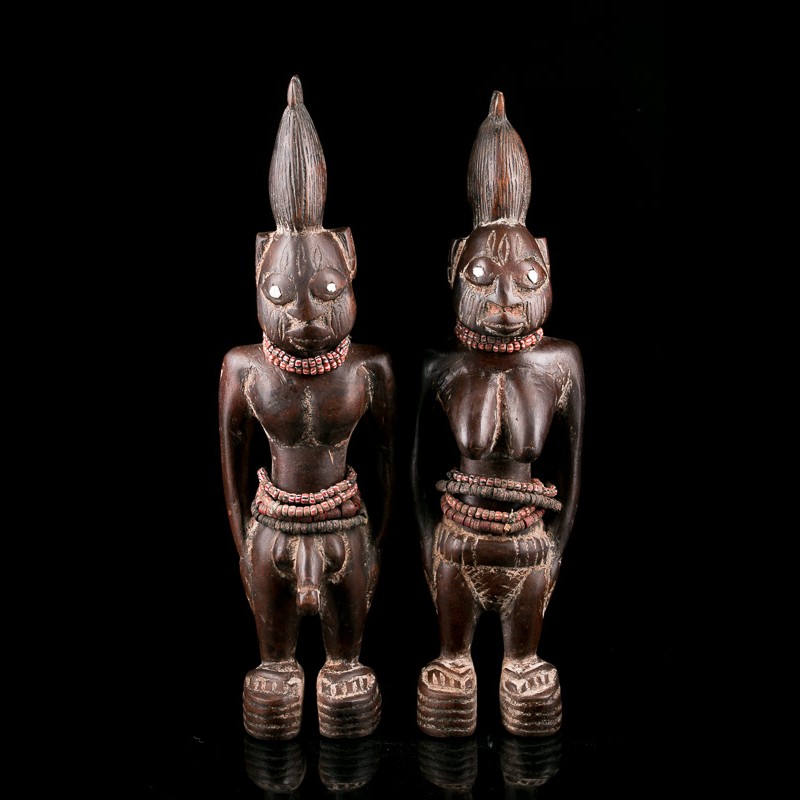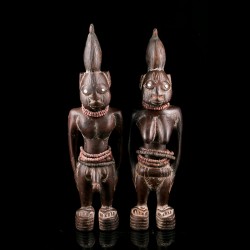














Ibeji statuettes are very common among the Yoruba. They are usually carved in pairs and represent twins whose soul is indivisible. As twins are common (4%), they were once frowned upon and put to death, as their birth marked an anomaly. They were called "monkey children" and were considered to be in the bush.
A long time ago, a reversal of beliefs took place, and now they are revered. They bring happiness and wealth to their parents. In Oyo, the Ibeji twins are considered to be the "sons of Shango" (god of thunder). However, an animal character is perceived in this double birth, which is associated with the black and white long-haired colobus that gives birth to two young like the mother of the twins.
Data sheet

Ibeji statuettes are very common among the Yoruba. They are usually carved in pairs and represent twins whose soul is indivisible. As twins are common (4%), they were once frowned upon and put to death, as their birth marked an anomaly. They were called "monkey children" and were considered to be in the bush.
A long time ago, a reversal of beliefs took place, and now they are revered. They bring happiness and wealth to their parents. In Oyo, the Ibeji twins are considered to be the "sons of Shango" (god of thunder). However, an animal character is perceived in this double birth, which is associated with the black and white long-haired colobus that gives birth to two young like the mother of the twins.